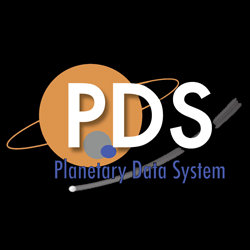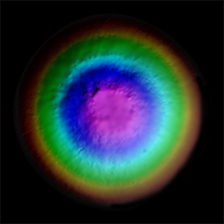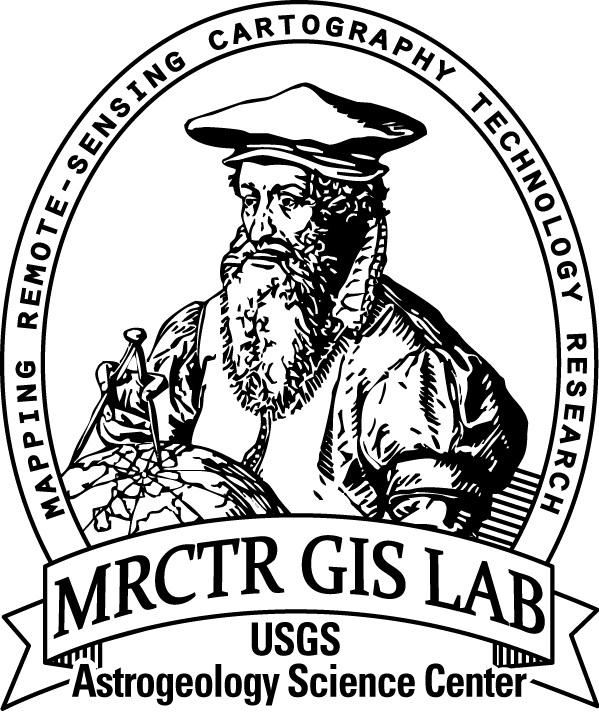Venus Geologic Map of the Lakshmi Planum Quadrangle
- Primary Authors
- Mikhail A. Ivanov and James W. Head, III
- Originators
- M. Ivanov, J. Head
- Publisher
- USGS Astrogeology Science Center
- Publication Date
- 2010-02-10
- Abstract
- The Lakshmi Planum quadrangle is in the northern hemisphere of Venus and extends from lat 50 degrees to 75 degrees N., and from long 300 degrees to 360 degrees E. The elevated volcanic plateau of Lakshmi Planum, which represents a very specific and unique class of highlands on Venus, dominates the northern half of the quadrangle. The surface of the planum stands 3-4 km above mean planetary radius and the plateau is surrounded by the highest Venusian mountain ranges, 7-10 km high. Before the Magellan mission, the geology of the Lakshmi Planum quadrangle was known on the basis of topographic data acquired by the Pioneer-Venus and Venera-15/16 altimeter and radar images received by the Arecibo telescope and Venera-15/16 spacecraft. These data showed unique topographic and morphologic structures of the mountain belts, which have no counterparts elsewhere on Venus, and the interior volcanic plateau with two large and low volcanic centers and large blocks of tessera-like terrain. From the outside, Lakshmi Planum is outlined by a zone of complexly deformed terrains that occur on the regional outer slope of Lakshmi. Vast low-lying plains surround this zone. After acquisition of the Venera-15/16 data, two classes of hypotheses were formulated to explain the unique structure of Lakshmi Planum and its surrounding. The first proposed that the western portion of Ishtar Terra, dominated by Lakshmi Planum, was a site of large-scale upwelling while the alternative hypothesis considered this region as a site of large-scale downwelling and underthrusting. Early Magellan results showed important details of the general geology of this area displayed in the Venera-15/16 images. Swarms of extensional structures and massifs of tesserae populate the southern slope of Lakshmi. The zone of fractures and grabens form a giant arc thousands of kilometers long and hundreds of kilometers wide around the southern flank of Lakshmi Planum. From the north, the deformational zones consist mostly of contractional structures such as ridges. Corona and corona-like structures are not typical features of this zone but occur within separate branches of extensional structures oriented radial to the edge of Lakshmi. The southeastern edge of Lakshmi appears to be the source of large volcanic flows that extend to the south toward the lowland areas of Sedna Planitia. Colette and Sacajawea Paterae in the interior of Lakshmi are low volcanic centers with very deep central depressions. Lava flows sourced by Colette and Sacajawea form distinctive radial patterns around these volcanoes. Magellan gravity data show that the northern and northeastern portions of the quadrangle, which correspond to Lakshmi Planum, represent a significant geoid anomaly with the peak value of about 90 m over Maxwell Montes at the eastern edge of the map area. Maxwell is characterized also by very high vertical gravity acceleration values (as much as 268 mGal). The lowland of Sedna Planitia to the south of Lakshmi has mostly negative geoid values (down to -40 m). The key geological structure of the quadrangle is Lakshmi Planum, the mode of formation of which is still a major unresolved problem. The topographic configuration, gravity signature, and pattern of deformation inside Lakshmi and along its boundaries make this feature unique on Venus. Thus, geological mapping of this region allows addressing several important questions that should help to put some constraints on the existing models of Lakshmi formation. What is the sequence of events in the formation and evolution of such a unique morphologic and topographic feature? What are the characteristics of the marginal areas of Lakshmi: the compact mountain belts and broad zones of deformation in the transition zone between Lakshmi and surrounding lowlands? How do the units in Lakshmi Planum quadrangle compare with the units mapped in neighboring and distant regions of Venus and what information do they provide concerning models for Venus
Contact and Distribution
- Format
- Geologic Map, Raster Data, Vector Data
- Access Scope
- RPIF
- Series Id
- 3116
- Native Data Set Environment
- Astrogeology Theme
- Cartography, Geology, Geomorphology, Photogeology, Planetary evolution, Stratigraphy
- Online Package Link
- https://astrogeology.usgs.gov/search/map/venus_geologic_map_of_the_lakshmi_planum_quadrangle
- External File Size
- 31176320
- Online File Link
- http://astropedia.astrogeology.usgs.gov/download/Venus/Geology/year-2010/Venus-Geologic-Map-of-the-Lakshmi-Planum-Quadrangle-V-7.pdf
- Access Instructions
- Pamphlet: ii, 18 p.; Map: 51.69 x 38.74 inches
- Contact Address
- 2255 N. Gemini Drive
- Contact City
- Flagstaff
- Contact State
- AZ
- Contact Postal Code
- 86001
- Contact Email
- astroweb@usgs.gov
Geospatial Information
- Target
- Venus
- Well Known Text (WKT)
- POLYGON((300 75, 360 75, 360 50, 300 50, 300 75))
- Minimum Latitude
- 50
- Maximum Latitude
- 75
- Minimum Longitude
- 300
- Maximum Longitude
- 360
- Object Type
- Grid Cell
- Quad Name
- V-7
- Map Scale (hard-copy)
- 1:5000000
- Horizontal Coordinate System Units
- Degrees



















